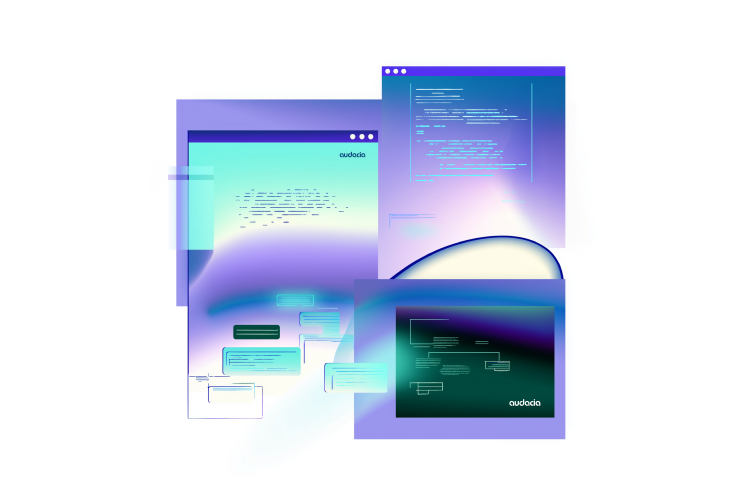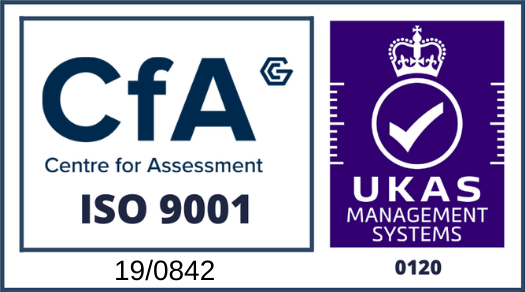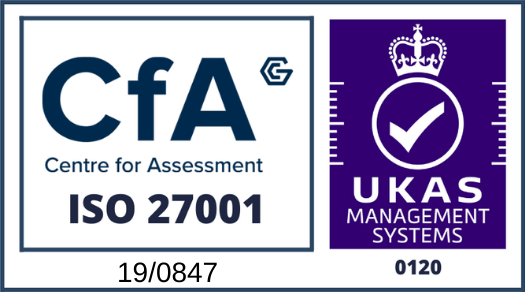How to get the first line of code - and everything that follows - right.
Without legacy constraints, greenfield projects allow teams to bake in modern practices, cloud-native architectures and a developer-first culture from day one. Done well, those early choices compound into faster releases, easier scaling and happier teams for years. Done poorly, they can create tomorrow’s technical-debt problems. This article discusses how development teams can lay solid foundations when starting from scratch.
Summary:
- Automate early. A CI/CD pipeline, test automation and Infrastructure as Code (IaC) from sprint 0 lock in speed and quality for the life of the product.
- Design for cloud and APIs. Cloud-first, API-first and security-by-design principles align with the UK Government’s Technology Code of Practice and give future teams flexibility at scale.
- Balance YAGNI with extensibility. Build “just enough” architecture - simple, loosely coupled services that are easy to extend later, not an over-engineered fortress.
- Invest in observability, documentation and culture. Practices like structured logging, Architecture Decision Records (ADRs), documentation and peer code review are far cheaper to embed before the codebase grows.
Blank Slates - Opportunities & Challenges:
Greenfield projects are often described by engineers as a “nirvana” – no legacy code, no entrenched constraints, the freedom to choose the best technologies.
But they also carry risk: without legacy constraints, teams might under-invest in necessary structure or, conversely, over-engineer because everything is possible.
For IT leaders, a greenfield initiative (be it a new digital product, a spin-off system, or a major rewrite separated from legacy) is an opportunity to set an example for how software should be done. It’s the chance to incorporate lessons learned from past projects and evolving industry practices.
One key guiding principle is “first build the right thing, then build it right” – meaning even with a perfect technical foundation, you must ensure the product meets user needs. Greenfield teams should still follow agile, user-centric development to validate they’re building a valuable product.
But our focus here is on building it right - the engineering practices and infrastructure that form the foundation.
Core Foundations:
CI/CD Pipelines:
Automated pipelines build the code, run tests, and (if tests pass) deploy to a test environment, as well as deploying further to production for continuous delivery. By doing this from the start, every code commit goes through a consistent, repeatable process, and developers become accustomed to fast feedback. It also enforces good habits: if a certain practice (like running unit tests) is mandated by the pipeline, it will become part of the team’s routine.
The pipeline can essentially be the embodiment of your process – add static analysis, security scans, etc., early on, so the team gets immediate feedback and quality is baked in.
Many UK startups attribute their rapid scale-up to having CI/CD from the get-go. For example, when Monzo began, they invested heavily in automation and tooling, which allowed them to deploy small changes frequently, catching issues early and scaling their operations without a hitch as user numbers grew.
Architecture and Design Principles:
Choose an architecture that will support future needs without over-complicating, for instance, favouring a microservice or modular monolith architecture.
Starting with microservices can allow for independent teams to work in parallel and deploy independently, fueling rapid feature development. The key is loose coupling – design components or services with clear responsibilities and interfaces, so that the system can evolve.
Gartner suggests that reducing coupling and complexity at design time increases future changeability. Apply known design principles (SOLID, high cohesion, etc.) to avoid complexity as features grow.
Cloud-Native & Infrastructure Automation:
The UK government Technology Code of Practice states technology projects should “use cloud first”. Essentially all greenfield projects should be cloud-first. Cloud provides on-demand resources, managed services and scalability that a new project can leverage instead of reinventing.
Use Infrastructure as Code (IaC) – tools like Terraform or AWS CloudFormation – to script your environments. This ensures you can replicate environments, do disaster recovery easily, and treat infrastructure setup as part of your codebase.
Additionally, consider using platform services to accelerate development (databases, messaging, authentication services). A greenfield project can save time by not building commodity components themselves. For example, why build your own identity service if you can use Azure Entra ID or Auth0? This frees your team to focus on unique business logic.
DevSecOps:
Security and compliance must be foundational, not an afterthought. Incorporate security design (threat modeling, secure defaults) and compliance requirements early. For instance, if building a healthcare app in the UK, ensure from day one that the data model and hosting comply with NHS Digital standards for patient data.
Implement security controls (encryption, secure secret storage, logging) as part of the initial build. Use automated static code analysis and dependency vulnerability scanning in your CI pipeline. It’s easier to build a secure product from scratch than to retrofit one later.
The Technology Code of Practice emphasises “Make things secure” and “Make privacy integral” as key points. Teams can focus on setting up monitoring and alerting with security in mind. For instance, define what constitutes suspicious behaviour in your system and plan how you’d detect it.
Open and Accessible Development:
Adopting an open-first approach can have many benefits. Using open-source components (with due diligence) accelerates development. Hosting your code in repositories where collaboration is easy (GitHub, GitLab) and possibly open-sourcing parts of it can attract community contributions, as well as potentially make new team additions easier due to visibility.
It’s an important opportunity to also consider accessibility from the start (especially important for public-facing services) – follow WCAG guidelines from the outset so you aren’t scrambling to fix accessibility later (for example, use semantic HTML, proper ARIA tags, etc., in web apps).
Building accessible and inclusive technology is not only a legal requirement for some (e.g. public sector must meet certain accessibility standards), but also expands your potential user base.
Team and Process Foundations:
Greenfield doesn’t mean “no process”; rather, it means the chance to implement lightweight agile processes that fit the team and purpose.
Define how the team will collaborate, for example a Scrum or Kanban approach. Set up a backlog with user stories, define a Definition of Done (including testing, documentation, etc.), and use an agile project tool (Jira, Trello, Azure Boards) from the start to track work, ensuring transparency.
Encourage practices like pair programming or peer code reviews from early on – these habits catch defects early and spread knowledge. Also, instill an engineering culture that aligns with your values. For example, if innovation is key, ensure people have time for spikes/proof-of-concepts; if reliability is crucial, emphasise TDD (Test-Driven Development) from the outset.
A strong positive culture set in a small initial team can scale with the product. For example, Monzo’s engineering principles, such as “make changes small and often” and “leave things better than you found them”, were set early and helped maintain quality and speed even as the engineering team scaled 60% in a year.
Building for Scale (but not over-building):
One risk in greenfield projects is over-engineering by trying to anticipate every future need. It’s important to strike a balance. Design an architecture that can scale out if needed, but don’t implement features or complexity you don’t need yet.
A useful concept is YAGNI (You Ain’t Gonna Need It) from agile: defer work on future hypothetical requirements until they are more certain. For example, you might foresee that the system could need a more complex sharding mechanism when it has millions of users, but if you’re at prototype stage with 100 users, don’t implement sharding now; just design the data access in a way that adding sharding later is possible (e.g. via an abstraction layer).
Another useful concept is building for extensibility, not general scalability, because trying to accommodate every potential future use makes systems complex and harder to maintain. Instead, build something that works for the known requirements, but with clean separation of concerns and with the ability to extend.
For instance, if building a payment processing service, you might design it to handle credit cards initially but make sure the way you implement doesn’t hardcode specifics that would prevent adding PayPal later – perhaps use a strategy pattern for payment methods. You wouldn’t, however, implement PayPal support from day one if it’s not needed – you’d just ensure you won’t have to rewrite everything when adding it.
Setting Up Environment & Tools:
On a practical level, ensure developers on a greenfield project have a frictionless environment.
This might include using containerisation (Docker) so that setting up the development environment is quick and matches production as much as possible. Many teams create a one-click onboarding script so a new dev can get the whole system running locally or in a personal dev environment in the cloud within minutes. Quick onboarding is a sign of good foundations.
As well as this, teams can implement source control best practices (feature branching or trunk-based dev, code reviews on pull requests, etc.) from day one. These practices are easier to establish when products are new, rather than fix later.
Monitoring & Observability from the Start:
An often overlooked foundation is observability.
Instrument the new application with logging, metrics and tracing early on. If you only add monitoring after going live, you might find you lack crucial insight into the system’s behaviour.
Instead, incorporate libraries for structured logging and alerting, choose a metrics collection system (such as cloud-native ones like AWS CloudWatch or Azure Monitor if on those clouds), and possibly integrate a tracing system (like OpenTelemetry) if you have a microservices architecture.
This “observability by design” means when you flip the switch to production, you can see what’s happening and catch performance issues or errors proactively.
Take Aways:
- Codify Best Practices: Document and implement engineering best practices for the project early. For example, establish a rule that all new code must have unit tests and must be peer-reviewed. Put this in a Wiki for the project, helping to ensure consistency and making information easily accessible.
- Observe Performance: Even if you don’t need to handle millions of users on day one, set up the ability to do performance testing. Create baseline performance tests (throughput, response time) for key operations and include them in your pipeline (even if they only run nightly). This way, you catch any egregious performance issues early. It also provides a baseline to compare as features are added.
- Keep Documentation Up-to-date: Start maintaining minimal but useful documentation. For example, a README for how to run the system, an Architecture Decision Record (ADR) log where you record key decisions (e.g. “Decision 1: We chose PostgreSQL over MySQL because...”). These ADRs help future team members understand why things were done. Also, document interfaces and APIs as you create them – possibly by adopting an API-first approach (write API spec first, then code). This avoids the scenario where 2 years in, nobody remembers why X was done or how Y works. Tools like Swagger and OpenAPI can be useful here in providing up to date API documentation automatically.
- Prototype to Validate Architecture: If you’re trying a novel architecture or new technology in the greenfield, do a quick prototype of the riskiest part. For instance, if you plan event-driven microservices, prototype a couple of services and the messaging between them to ensure it behaves as expected. This can surface integration challenges or learning curves early, allowing you to adjust the plan while risks are low.
In short, a greenfield build is a once-only chance to future-proof your product. By baking in cloud-native infrastructure, automated CI/CD, observability, solid security and a culture of small, high-quality changes from sprint 0, teams can help to avoid tomorrow’s technical-debt problems and drive improved developer velocity.


